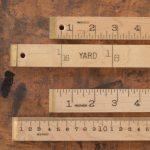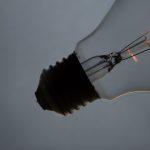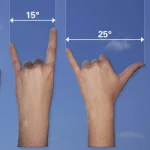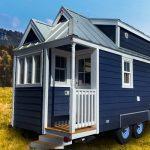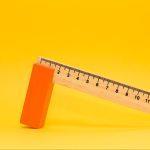Wire Size Chart: Get the Right Size and Wire Gauge
Electric wires are conductive materials used to transmit electricity throughout your home. They are the “lifeblood” of your electric system since they connect electric power from the source to different areas. Choosing the right wire size and gauge is critical when buying electric wires since they determine how much power can run through (skip straight to the wire size chart).
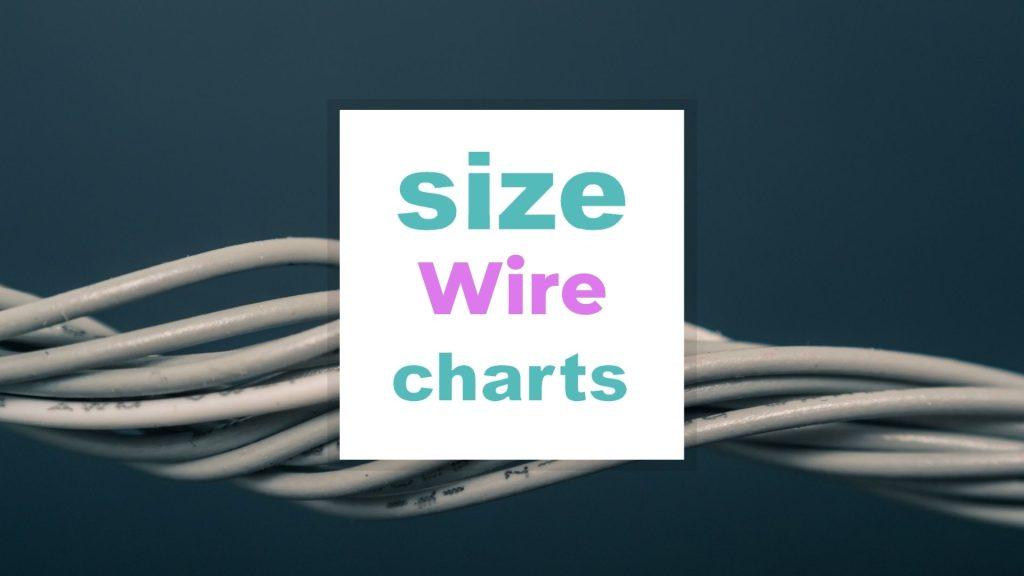
You’ll be susceptible to electric issues if you get the size wrong. That’s why learning the right wire sizes is important. Fortunately, we have everything you need in our electric wire size chart and guide.
Let’s get started!
Jump right into the Frequently Asked Questions
Related: Nail Gun Size Chart and Types of Nails for all kinds of jobs, Printable Ruler In Cm: Make it Yourself
Table of Content Wire
- Electrical Wire Size Charts
- Wire Ampacity Chart for Copper Wires
- Ampacity Wire Size Chart for Aluminum Wires
- Common Wire Sizes According to Application
- How to Choose the Right Electric Wire Size
- Frequently Asked Questions
Electrical Wire Size Charts
Related: Stable gun Size Chart by model and staple gauge
AWG Size Conversion Chart
AWG stands for American Wire Gauge Sizes
| Gauge No. | Inches | Millimeters |
| 7/0 | 0.651300 | 16.54 |
| 6/0 | 0.580049 | 14.73 |
| 5/0 | 0.516549 | 13.12 |
| 4/0 | 0.460000 | 11.68 |
| 3/0 | 0.409642 | 10.40 |
| 2/0 | 0.364797 | 9.266 |
| 1/0 | 0.324861 | 8.251 |
| 1 | 0.289297 | 7.348 |
| 2 | 0.257626 | 6.544 |
| 3 | 0.229423 | 5.827 |
| 4 | 0.204307 | 5.189 |
| 5 | 0.181941 | 4.621 |
| 6 | 0.162023 | 4.115 |
| 7 | 0.144285 | 3.665 |
| 8 | 0.128490 | 3.264 |
| 9 | 0.114424 | 2.906 |
| 10 | 0.101897 | 2.588 |
| 11 | 0.090742 | 2.305 |
| 12 | 0.080808 | 2.053 |
| 13 | 0.071962 | 1.828 |
| 14 | 0.064084 | 1.628 |
| 15 | 0.057068 | 1.450 |
| 16 | 0.050821 | 1.291 |
| 17 | 0.045257 | 1.150 |
| 18 | 0.040303 | 1.024 |
| 19 | 0.035891 | 0.9116 |
| 20 | 0.031961 | 0.8118 |
| 21 | 0.028462 | 0.7229 |
| 22 | 0.025347 | 0.6438 |
| 23 | 0.022572 | 0.5733 |
| 24 | 0.020101 | 0.5106 |
| 25 | 0.017900 | 0.4547 |
| 26 | 0.015941 | 0.4049 |
| 27 | 0.014196 | 0.3606 |
| 28 | 0.012641 | 0.3211 |
| 29 | 0.011258 | 0.2860 |
| 30 | 0.010025 | 0.2546 |
| 31 | 0.008928 | 0.2268 |
| 32 | 0.007950 | 0.2019 |
| 33 | 0.007080 | 0.1798 |
| 34 | 0.006305 | 0.1601 |
| 35 | 0.005615 | 0.1426 |
| 36 | 0.005000 | 0.1270 |
| 37 | 0.004453 | 0.1131 |
| 38 | 0.003965 | 0.1007 |
| 39 | 0.003531 | 0.08969 |
| 40 | 0.003145 | 0.07988 |
| 41 | 0.002800 | 0.07112 |
| 42 | 0.002494 | 0.06335 |
| 43 | 0.002221 | 0.05641 |
| 44 | 0.001978 | 0.05024 |
| 45 | 0.001761 | 0.04473 |
| 46 | 0.001568 | 0.03983 |
| 47 | 0.001397 | 0.03548 |
| 48 | 0.001244 | 0.03160 |
| 49 | 0.001108 | 0.02814 |
| 50 | 0.000986 | 0.02504 |
| 51 | 0.000878 | 0.02230 |
| 52 | 0.000782 | 0.01986 |
| 53 | 0.000697 | 0.01770 |
| 54 | 0.000620 | 0.01575 |
| 55 | 0.000552 | 0.01402 |
| 56 | 0.000492 | 0.01250 |
| 57 | 0.000438 | 0.01113 |
| 58 | 0.000390 | 0.00991 |
| 59 | 0.000347 | 0.00881 |
| 60 | 0.000309 | 0.00785 |
AWG Electrical Current Load Limits Chart
| AWG gauge | Diameter (Inches) | Diameter (mm) | Cross-section area (mm2) | Resistance (Ohms/1000 ft) | Resistance (Ohms per km) | Max current for chassis wiring (amps) | Max current for power transmission (amps) | Max frequency for 100% skin depth | Breaking force for Copper wire |
| 0000 | 0.46 | 11.684 | 107 | 0.049 | 0.16072 | 380 | 302 | 125 Hz | 6120 lbs |
| 000 | 0.4096 | 10.40384 | 84.9 | 0.0618 | 0.202704 | 328 | 239 | 160 Hz | 4860 lbs |
| 00 | 0.3648 | 9.26592 | 67.4 | 0.0779 | 0.255512 | 283 | 190 | 200 Hz | 3860 lbs |
| 0 | 0.3249 | 8.25246 | 53.5 | 0.0983 | 0.322424 | 245 | 150 | 250 Hz | 3060 lbs |
| 1 | 0.2893 | 7.34822 | 42.4 | 0.1239 | 0.406392 | 211 | 119 | 325 Hz | 2430 lbs |
| 2 | 0.2576 | 6.54304 | 33.6 | 0.1563 | 0.512664 | 181 | 94 | 410 Hz | 1930 lbs |
| 3 | 0.2294 | 5.82676 | 26.7 | 0.197 | 0.64616 | 158 | 75 | 500 Hz | 1530 lbs |
| 4 | 0.2043 | 5.18922 | 21.1 | 0.2485 | 0.81508 | 135 | 60 | 650 Hz | 1210 lbs |
| 5 | 0.1819 | 4.62026 | 16.8 | 0.3133 | 1.027624 | 118 | 47 | 810 Hz | 960 lbs |
| 6 | 0.162 | 4.1148 | 13.3 | 0.3951 | 1.295928 | 101 | 37 | 1100 Hz | 760 lbs |
| 7 | 0.1443 | 3.66522 | 10.6 | 0.4982 | 1.634096 | 89 | 30 | 1300 Hz | 605 lbs |
| 8 | 0.1285 | 3.2639 | 8.37 | 0.6282 | 2.060496 | 73 | 24 | 1650 Hz | 480 lbs |
| 9 | 0.1144 | 2.90576 | 6.63 | 0.7921 | 2.598088 | 64 | 19 | 2050 Hz | 380 lbs |
| 10 | 0.1019 | 2.58826 | 5.26 | 0.9989 | 3.276392 | 55 | 15 | 2600 Hz | 314 lbs |
| 11 | 0.0907 | 2.30378 | 4.17 | 1.26 | 4.1328 | 47 | 12 | 3200 Hz | 249 lbs |
| 12 | 0.0808 | 2.05232 | 3.31 | 1.588 | 5.20864 | 41 | 9.3 | 4150 Hz | 197 lbs |
| 13 | 0.072 | 1.8288 | 2.63 | 2.003 | 6.56984 | 35 | 7.4 | 5300 Hz | 150 lbs |
| 14 | 0.0641 | 1.62814 | 2.08 | 2.525 | 8.282 | 32 | 5.9 | 6700 Hz | 119 lbs |
| 15 | 0.0571 | 1.45034 | 1.65 | 3.184 | 10.44352 | 28 | 4.7 | 8250 Hz | 94 lbs |
| 16 | 0.0508 | 1.29032 | 1.31 | 4.016 | 13.17248 | 22 | 3.7 | 11 k Hz | 75 lbs |
| 17 | 0.0453 | 1.15062 | 1.04 | 5.064 | 16.60992 | 19 | 2.9 | 13 k Hz | 59 lbs |
| 18 | 0.0403 | 1.02362 | 0.823 | 6.385 | 20.9428 | 16 | 2.3 | 17 kHz | 47 lbs |
| 19 | 0.0359 | 0.91186 | 0.653 | 8.051 | 26.40728 | 14 | 1.8 | 21 kHz | 37 lbs |
| 20 | 0.032 | 0.8128 | 0.519 | 10.15 | 33.292 | 11 | 1.5 | 27 kHz | 29 lbs |
| 21 | 0.0285 | 0.7239 | 0.412 | 12.8 | 41.984 | 9 | 1.2 | 33 kHz | 23 lbs |
| 22 | 0.0253 | 0.64516 | 0.327 | 16.14 | 52.9392 | 7 | 0.92 | 42 kHz | 18 lbs |
| 23 | 0.0226 | 0.57404 | 0.259 | 20.36 | 66.7808 | 4.7 | 0.729 | 53 kHz | 14.5 lbs |
| 24 | 0.0201 | 0.51054 | 0.205 | 25.67 | 84.1976 | 3.5 | 0.577 | 68 kHz | 11.5 lbs |
| 25 | 0.0179 | 0.45466 | 0.162 | 32.37 | 106.1736 | 2.7 | 0.457 | 85 kHz | 9 lbs |
| 26 | 0.0159 | 0.40386 | 0.128 | 40.81 | 133.8568 | 2.2 | 0.361 | 107 kHz | 7.2 lbs |
| 27 | 0.0142 | 0.36068 | 0.102 | 51.47 | 168.8216 | 1.7 | 0.288 | 130 kHz | 5.5 lbs |
| 28 | 0.0126 | 0.32004 | 0.080 | 64.9 | 212.872 | 1.4 | 0.226 | 170 kHz | 4.5 lbs |
| 29 | 0.0113 | 0.28702 | 0.0647 | 81.83 | 268.4024 | 1.2 | 0.182 | 210 kHz | 3.6 lbs |
| 30 | 0.01 | 0.254 | 0.0507 | 103.2 | 338.496 | 0.86 | 0.142 | 270 kHz | 2.75 lbs |
| 31 | 0.0089 | 0.22606 | 0.0401 | 130.1 | 426.728 | 0.7 | 0.113 | 340 kHz | 2.25 lbs |
| 32 | 0.008 | 0.2032 | 0.0324 | 164.1 | 538.248 | 0.53 | 0.091 | 430 kHz | 1.8 lbs |
| Metric 2.0 | 0.00787 | 0.200 | 0.0314 | 169.39 | 555.61 | 0.51 | 0.088 | 440 kHz | |
| 33 | 0.0071 | 0.18034 | 0.0255 | 206.9 | 678.632 | 0.43 | 0.072 | 540 kHz | 1.3 lbs |
| Metric 1.8 | 0.00709 | 0.180 | 0.0254 | 207.5 | 680.55 | 0.43 | 0.072 | 540 kHz | |
| 34 | 0.0063 | 0.16002 | 0.0201 | 260.9 | 855.752 | 0.33 | 0.056 | 690 kHz | 1.1 lbs |
| Metric 1.6 | 0.0063 | 0.16002 | 0.0201 | 260.9 | 855.752 | 0.33 | 0.056 | 690 kHz | |
| 35 | 0.0056 | 0.14224 | 0.0159 | 329 | 1079.12 | 0.27 | 0.044 | 870 kHz | 0.92 lbs |
| Metric 1.4 | .00551 | .140 | 0.0154 | 339 | 1114 | 0.26 | 0.043 | 900 kHz | |
| 36 | 0.005 | 0.127 | 0.0127 | 414.8 | 1360 | 0.21 | 0.035 | 1100 kHz | 0.72 lbs |
| Metric 1.25 | .00492 | 0.125 | 0.0123 | 428.2 | 1404 | 0.20 | 0.034 | 1150 kHz | |
| 37 | 0.0045 | 0.1143 | 0.0103 | 523.1 | 1715 | 0.17 | 0.0289 | 1350 kHz | 0.57 lbs |
| Metric 1.12 | .00441 | 0.112 | 0.00985 | 533.8 | 1750 | 0.163 | 0.0277 | 1400 kHz | |
| 38 | 0.004 | 0.1016 | 0.00811 | 659.6 | 2163 | 0.13 | 0.0228 | 1750 kHz | 0.45 lbs |
| Metric 1 | .00394 | 0.1000 | 0.00785 | 670.2 | 2198 | 0.126 | 0.0225 | 1750 kHz | |
| 39 | 0.0035 | 0.0889 | 0.00621 | 831.8 | 2728 | 0.11 | 0.0175 | 2250 kHz | 0.36 lbs |
| 40 | 0.0031 | 0.07874 | 0.00487 | 1049 | 3440 | 0.09 | 0.0137 | 2900 kHz | 0.29 lbs |
Wire Ampacity Chart for Copper Wires
Related: Lawn Mower Battery size guide (with easy to use size charts)
| kcmil or MCM Wire: | mm2 (Diameter): | Ampacity At 60°C (140°F): | Ampacity At 75°C (167°F): | Ampacity At 90°C (194°F): |
| 250 kcmil (250 MCM) | 126.7 mm2 | 215 Amps | 255 Amps | 290 Amps |
| 300 kcmil (300 MCM) | 152.0 mm2 | 240 Amps | 285 Amps | 320 Amps |
| 350 kcmil (350 MCM) | 177.3 mm2 | 260 Amps | 310 Amps | 350 Amps |
| 400 kcmil (400 MCM) | 202.7 mm2 | 280 Amps | 335 Amps | 380 Amps |
| 500 kcmil (500 MCM) | 253.4 mm2 | 320 Amps | 380 Amps | 430 Amps |
| 600 kcmil (600 MCM) | 304.0 mm2 | 355 Amps | 420 Amps | 475 Amps |
| 700 kcmil (700 MCM) | 354.7 mm2 | 385 Amps | 460 Amps | 520 Amps |
| 750 kcmil (750 MCM) | 380.0 mm2 | 400 Amps | 475 Amps | 535 Amps |
| 800 kcmil (800 MCM) | 405.4 mm2 | 410 Amps | 490 Amps | 555 Amps |
| 900 kcmil (900 MCM) | 456.0 mm2 | 435 Amps | 520 Amps | 585 Amps |
| 1000 kcmil (1000 MCM) | 506.7 mm2 | 455 Amps | 545 Amps | 615 Amps |
| 1250 kcmil (1250 MCM) | 633.4 mm2 | 495 Amps | 590 Amps | 665 Amps |
| 1500 kcmil (1500 MCM) | 760.1 mm2 | 520 Amps | 625 Amps | 705 Amps |
| 1750 kcmil (1750 MCM) | 886.7 mm2 | 545 Amps | 650 Amps | 735 Amps |
| 2000 kcmil (2000 MCM) | 1013.4 mm2 | 560 Amps | 665 Amps | 750 Amps |
Ampacity Wire Size Chart for Aluminum Wires
Related: Light bulb Size Chart: Types and Dimension guide, Understanding Light Bulb Base Sizes
| kcmil or MCM Wire: | Ampacity At 60°C (140°F): | Ampacity At 75°C (167°F): | Ampacity At 90°C (194°F): |
| 250 kcmil (250 MCM) | 170 Amps | 205 Amps | 230 Amps |
| 300 kcmil (300 MCM) | 190 Amps | 230 Amps | 255 Amps |
| 350 kcmil (350 MCM) | 210 Amps | 250 Amps | 280 Amps |
| 400 kcmil (400 MCM) | 225 Amps | 270 Amps | 305 Amps |
| 500 kcmil (500 MCM) | 260 Amps | 310 Amps | 350 Amps |
| 600 kcmil (600 MCM) | 285 Amps | 340 Amps | 385 Amps |
| 700 kcmil (700 MCM) | 310 Amps | 375 Amps | 420 Amps |
| 750 kcmil (750 MCM) | 320 Amps | 385 Amps | 435 Amps |
| 800 kcmil (800 MCM) | 330 Amps | 395 Amps | 450 Amps |
| 900 kcmil (900 MCM) | 355 Amps | 425 Amps | 480 Amps |
| 1000 kcmil (1000 MCM) | 375 Amps | 445 Amps | 500 Amps |
| 1250 kcmil (1250 MCM) | 405 Amps | 485 Amps | 545 Amps |
| 1500 kcmil (1500 MCM) | 435 Amps | 520 Amps | 585 Amps |
| 1750 kcmil (1750 MCM) | 455 Amps | 545 Amps | 615 Amps |
| 2000 kcmil (2000 MCM) | 470 Amps | 560 Amps | 630 Amps |
Common Wire Sizes According to Application
Related: Air Compressor Size Chart And Selection Guide
| Wire Gauge | Rated Ampacity | Wire Applications |
| 4/0 (0000) | 260 Amps | Residential electrical installations |
| 3/0 (000) | 200 Amps | Service entrance and feeder cable |
| 1/0 (0) | 150 Amps | Service entrance and feeder cable |
| 2 Gauge | 95 Amps | Large water heater elements |
| 4 Gauge | 70 Amps | Electric furnaces, large electric heaters |
| 6 Gauge | 55 Amps | Furnaces, cooktops and electric ranges |
| 10 Gauge | 30 Amps | Electric clothes dryers, 240V window Air Conditioners, electric water heaters |
| 12 Gauge | 20 Amps | Kitchen, bathroom & outdoor outlets – 120V Air Conditioners |
| 14 Gauge | 15 Amps | Light fixtures, lamps, receptacles, lighting circuits |
| 16-Gauge | 13 Amps | Light-duty extension cords |
| 18 Gauge | 10 Amps | Low-voltage lights and lamp cords |
How to Choose the Right Electric Wire Size
Related: Screw Size Chart And Thread Count Guide
There are various considerations that can guide you in choosing the right wire size. Let’s briefly discuss them below.
1. Wire Type
The first thing to determine is the type of wire you need. There are two types of wire used for electrical applications; copper and aluminum. Copper is an excellent conductor used in various scenarios, but it’s expensive and pretty heavy. On the other hand, aluminum is much lighter and also a good conductor of electricity. Unfortunately, aluminum wires are less durable than copper wires.
2. AWG
The American Wire Gauge (AWG) is the dominant sizing system for wires in the US. The sizes help electrical professionals determine the right application for different wire sizes.
AWG is also responsible for providing the ampacity of different wire sizes. This aids in determining the right application for each wire. You can refer to the table on wire sizes and their applications in the previous section for clarification.
If you don’t use the correct wire size for your project, you could end up with an electrical incident. AWG wires are listed in reverse, meaning the smaller numbers are the thickest wires while the largest numbers are the thinnest.
3. Amperage
The size of the wire affects the amperage rating, which is why it’s important to know the right size for your needs (to use the wire size chart). If the wire has a lower current carrying capacity than the power running through it, it could overheat. So it’s essential to choose a wire with the electrical resistance that matches its diameter. Wire thickness also determines the strength of the wire. A thinner wire is weaker than a thicker wire.
4. kcmil Wires
Unlike AWG wires, kcmil wires are capable of withstanding 200 amps of current. As such, they are thicker since they can carry higher currents than AWG wires. kcmil also denotes the cross-sectional area of the wire, which helps establish how much power a wire can take depending on the gauge. Check out our kcmil wire size chart for more details.
Learn more about different types of wires and sizes (video)
Frequently Asked Questions
1. What size wire for 50 amp?
For a maximum of 50 amps, you’ll need a wire gauge of 6. Perfect for Furnaces, cooktops, and electric ranges. Fifty amp wires are most often used to power many different appliances
2. How do I know what size wire to use?
The main way to determine the correct size of wire is to determine the amperage the wire should conduct according to the thickness of the diameter.
3. How far can you run 12 gauge wire on a 15 amp circuit?
Up to 70 feet.
4. How far can you run 10 gauge wire for 30 amps?
A 10-gauge wire can go up to 150 feet.
5. Which wire is good for house wiring?
Copper is the best for house wiring since it is more durable and offers better conductivity than aluminum wires.
6. How many amps can 16 gauge wire handle?
A 16-gauge wire can handle 13 amps of power.
7. What size wire for 100 amp?
A 100 amp sub panel wiring size requirement is #4 for copper wires and #2 for aluminum wires.
Conclusion
Choosing the right wire size can be tricky without a prior understanding of electric wiring. However, the right wire diameter isn’t hard to find when you know how much power you want to run through it. Once you know how much current you need to power your home, you can choose a suitable wire size from our charts.
Whether you use AWG or kcmil, you can find a good size for your needs. Comment any questions about this topic in the section below.
Picture in this post is by John Barkiple on Unsplash
Related to Wire Size Chart
- Barbie Doll Size : What are different sizes of Barbie ?
- Blanket sizes chart : blanket sizes and dimensions in inches & cm
- Tablecloth size chart – What are standard tablecloth sizes ?
- How Many Meters Are In A Yard?
- How Many Centimeters are 8 Inches?
- Knife Sizes and Different Types
- 4 Inches is How Many Centimeters?
- Light Bulb Base Sizes : What size light bulb base do I need?
- Tesalate Towel Size Guide
- Light bulb Size : What are the different and standard bulb sizes?
- Duvet Sizes: What is a Standard-Size Duvet?
- Single Car Garage Size and Dimensions
- How High Is A Story?
- How Much Does 1 Cup Of Rice Weigh?
- Cast Iron Skillet Sizes: What Size Do I Need?
- Dollar Bills Size Chart
- Pizza Sizes: Which One to Order?
- How To Measure A Foot Without A Ruler
- Wine Glass Size Chart
- Tiny Houses Size Charts
- How Many Inches Are In 20 Centimeters?
- How To Measure 1 Meter Without A Ruler?
- Nightstand Size and Dimensions for Bedroom
- Lamp Shade Size Guide – What size lampshade do I need?




